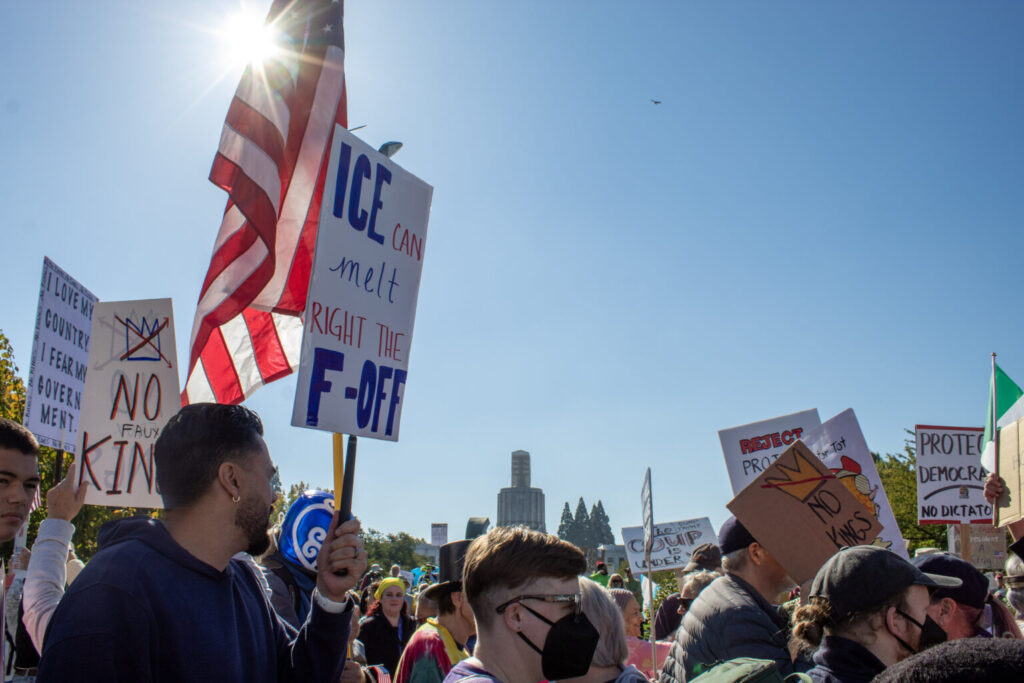Is Protest a Demand or a Warning? Recasting Demonstrations as Signals of Imminent Rupture

When people take to the streets, the story we are often told is that they are making a demand for justice, for recognition, for change. Protest becomes framed as a petition to power, an appeal to the conscience of the state. Yet history, especially the history narrated by Black thought leaders, suggests another reading: protest is not simply a demand but a warning. It is a flare shot into the night sky, announcing that something deeper is breaking, and that if ignored, society will face rupture.
This reading emerges clearly in the work of Cedric Robinson, whose Black Marxism showed how Black struggles were never reducible to narrow reforms but were “the continuing eruptions… against a system of racial capitalism that could not contain them” (Robinson 1983, p. 171). For Robinson, rebellion wasn’t an aberration but the logical eruption of a system built on domination. Each protest from slave uprisings to anti-colonial revolts was less a polite request for reform than a signal that the order could no longer contain the people’s will.
The tendency to reduce protest to “peaceful versus violent” misses this point. CLR James, in The Black Jacobins, explained how enslaved Haitians petitioned, negotiated, and endured for decades before revolution became the only effective language left. “The slaves destroyed tirelessly. Like the peasants in Jacquerie or in the German Peasants’ War, they knew no limit to their vengeance” (James 1938, p. 87). Their rebellion was not born out of irrational rage but because nonviolent appeals had been structurally foreclosed.
Contemporary debates around nonviolent protest often ignore how states manipulate this dichotomy. Robin D.G. Kelley, in Freedom Dreams, reminds us that radical protest is not only about tactics but about vision: “The most powerful, visionary dreams of freedom emerged from the poorest, most downtrodden, and the most despised people” (Kelley 2002, p. 9). Peaceful protest can be absorbed as spectacle celebrated for its civility while its deeper visions are co-opted or ignored. Disruptive protest, meanwhile, is criminalized. Both reactions reveal that what unsettles power is not civility or incivility but the warning that the social order might unravel.
This helps us see why Assata Shakur insisted in her autobiography that “nobody in the world, nobody in history, has ever gotten their freedom by appealing to the moral sense of the people who were oppressing them” (Shakur 1987, p. 62). For Shakur, nonviolent protest had limits not because it lacked dignity but because it presumed the oppressor could be shamed into humanity. Protest, when understood as warning, discards that illusion: it tells us that the system will not yield unless forced to confront its own fragility.
Warnings echo beyond their immediate context. Walter Rodney, writing in How Europe Underdeveloped Africa, linked protest in colonized nations to the global structure of exploitation. He noted that labeling anti-colonial uprisings as “violent” was to “mistake the symptom for the disease” (Rodney 1972, p. 24). For Rodney, protest was a warning not just to colonial administrators but to the whole edifice of imperialism: exploitation had reached its limits.
In the United States, this contradiction plays out again and again. From the Watts uprising of 1965 to Ferguson in 2014, peaceful protest was met with dismissal until disruption forced recognition. The Kerner Commission Report (1968) admitted as much, concluding that “What white Americans have never fully understood but what the Negro can never forget is that white society is deeply implicated in the ghetto. White institutions created it, white institutions maintain it, and white society condones it” (p. 2). Uprisings, the report noted, were rational signals of structural inequality, not senseless explosions.
Across the ocean, Palestinian marches like the 2018 Great March of Return followed the same trajectory. Tens of thousands walked unarmed to the border fences demanding rights and were met with sniper fire. Human rights observers documented over 200 deaths in that first year alone.¹ The international community debated “violence” but ignored the warning embedded in the protest: a society cannot indefinitely cage millions without collapse.
Protest, then, is not a naïve hope that the powerful will suddenly act against their interests. It is a declaration that the governed are already moving beyond the terms imposed on them. As June Jordan once wrote, “We are the ones we have been waiting for” (Jordan 1980, p. 43). Protest warns that if transformation does not come through negotiation, it will come through rupture.
The real question is not whether protest is peaceful or violent, respectable or radical. The question is: will we read its signals in time? Because every ignored protest, as history shows, is less a plea than a countdown.
References
● James, CLR. The Black Jacobins. Vintage, 1963 [1938].
● Jordan, June. Civil Wars. Beacon Press, 1980.
● Kelley, Robin D.G. Freedom Dreams: The Black Radical Imagination. Beacon Press, 2002.
● Kerner Commission. Report of the National Advisory Commission on Civil Disorders. U.S. Government Printing Office, 1968.
● Robinson, Cedric J. Black Marxism: The Making of the Black Radical Tradition. Zed Books, 1983.
● Rodney, Walter. How Europe Underdeveloped Africa. Bogle-L’Ouverture, 1972.
● Shakur, Assata. Assata: An Autobiography. Zed Books, 1987.
● UN Human Rights Council. “Report on the Independent International Commission of Inquiry on the Protests in the Occupied Palestinian Territory.” 2019.
¹ UN Human Rights Council (2019) found Israeli forces used live ammunition on protesters during the Great March of Return, resulting in over 200 deaths in 2018–2019.

